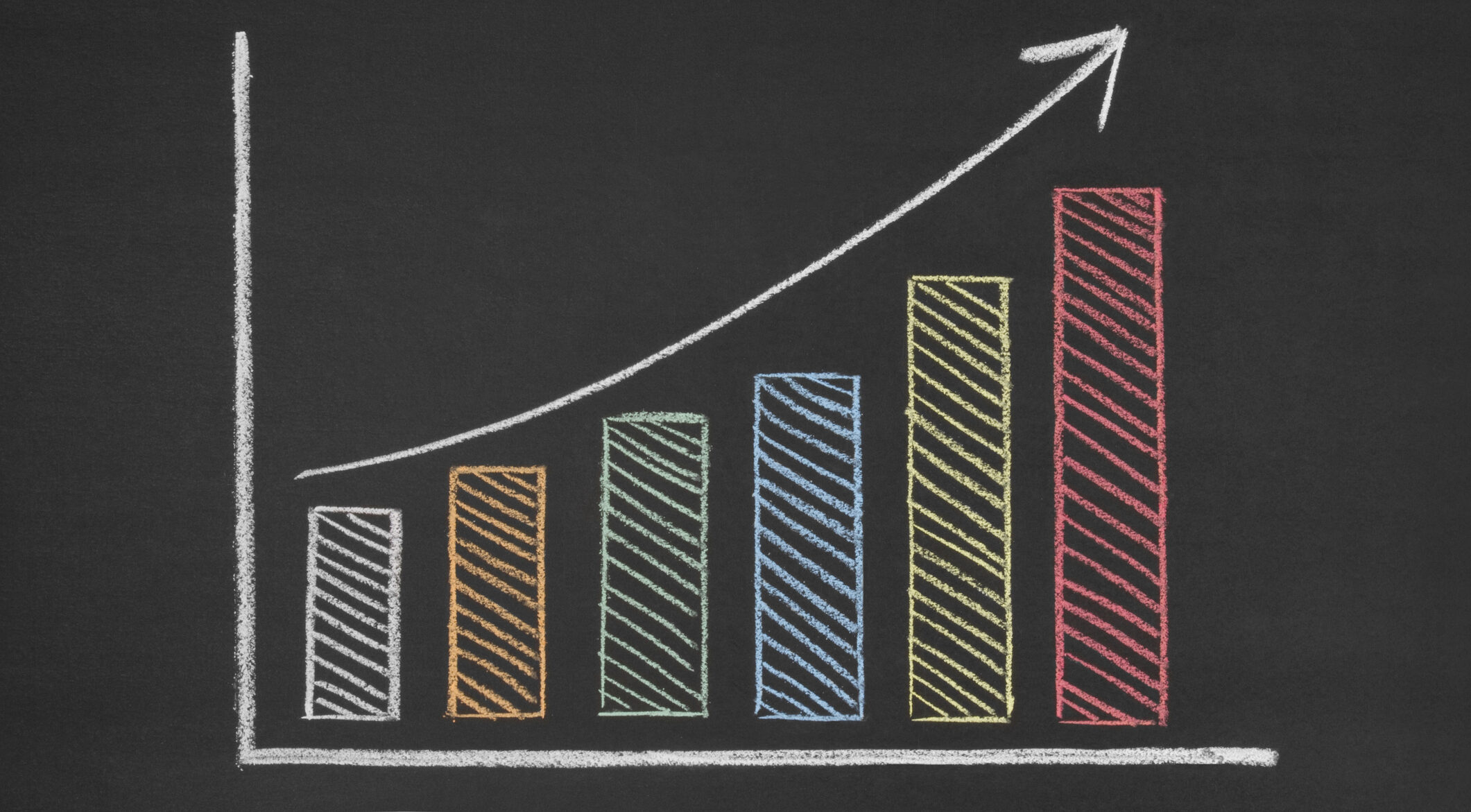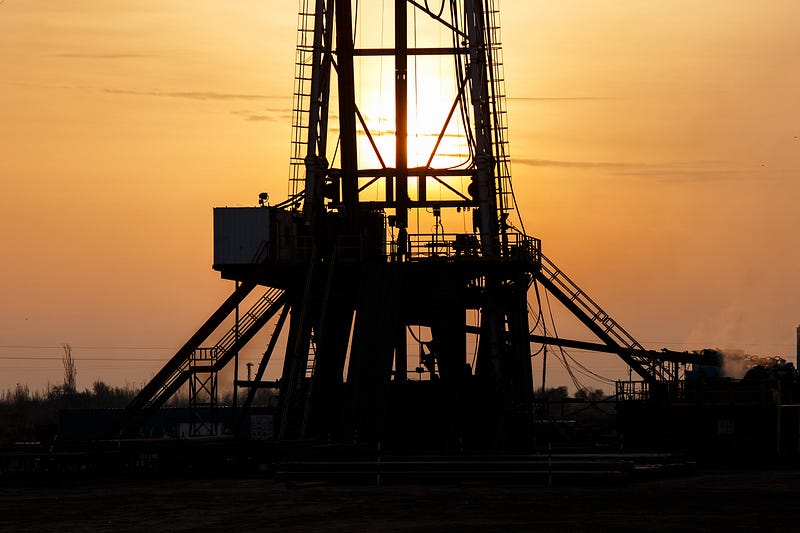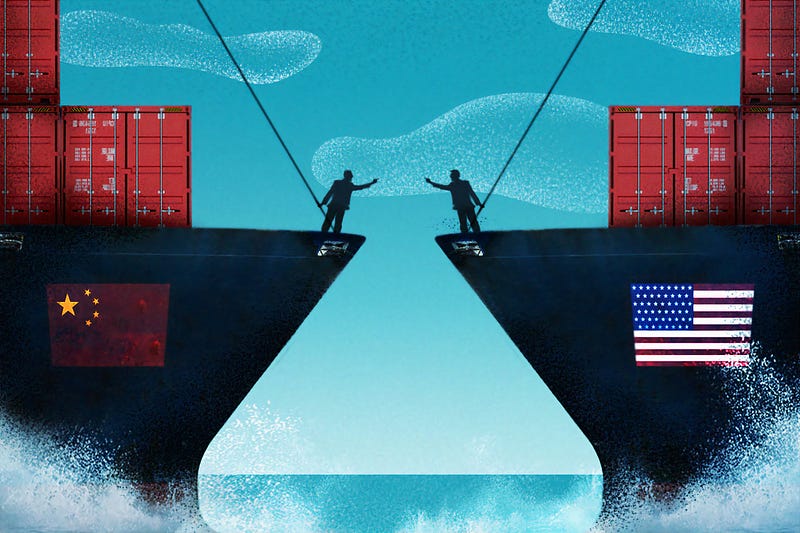A Discussion of “Who’s Paying for the US Tariffs? A Longer-Term Perspective”
The Trump tariffs on China will lead to inflation, job losses and the end of the world as we know it! OK, a bit much, but sometimes reading the news feels more like click bait.
As an economist, I have to admit I was excited in an academic sense to see the tariff policy because we never get to conduct experiments on the economy, for obvious reasons.
After over 70 years of reducing tariffs and removing trade barriers, we could collect data on what happens if tariffs are increased by a large country.
Economic theory as we teach it could lead one to those predictions in the intro: prices would rise. But if you went a little further in your economics curriculum, you might have learned about a possible exception — the large country case.
How Tariffs Work
First, a general lesson on the impact of tariffs. Wait, I promise I will keep it simple and won’t draw any graphs. If you know all of this you can scroll down to the results the authors found. I won’t mind.
Imagine we lived in a world where bicycles cost $100 and there is no international trade. So our domestic producers are making all of the bicycles for our consumers. But the world price is $50 because foreign producers can make them cheaper.
If we open our economy to foreign trade, all those $50 bikes will come in. Theoretically, if we can import enough, our bicycle price will fall from $100 to $50.
What is the impact?
- Consumers pay less and buy more, overall a gain.
- Foreign producers sell more, a gain for them.
- Domestic producers make less, a loss for them.
Domestic production does not have to go to zero if there are some lower cost producers who can afford to sell bikes at $50, but many domestic producers are run out of business. This is why you hear that free trade leads to job losses.
Economists judge the situation by how efficiently our resources are being used. In a global sense, free trade leads to a more efficient use of our resources.
How?
Freeing up the resources that used to be locked up in producing bicycles domestically to be used in other ways where we do have a competitive advantage is an increase in the efficiency of the global allocation of resources.
It is a matter of debate how well and how easily those freed up resources can migrate elsewhere, but in the long run (the economist’s favorite crutch) it leads to a more efficient use of our scarce resources.
But, the domestic bicycle industry is caring more about their job losses than efficiency so they may try to get a tariff passed so they can compete with these cheap foreign bicycles.
A tariff is like a tax on imports. The foreign producers still sell their bicycles for $50 to the US importer who then pays the tariff to the US government. When the importer sells the bicycle along the distribution chain, the price will be raised by the amount of the tariff.
In our example, if the tariff is $10 on bicycles, then the price for bicycles in the US will be $60. What is the impact of the tariff?
- Consumers pay more, buy less, overall a loss.
- Foreign producers sell less, a loss for them.
- Domestic producers produce and sell more, a gain for them.
- Government earns tariff revenue, a gain.
In econ-speak, we say a tariff causes two kinds of inefficiencies. A consumption inefficiency because consumers are buying less and paying more compared to the pre-tariff price. And a production inefficiency because the relatively less efficient domestic producers are making more and the relatively efficient foreign producers are making less.
All in all, these inefficiencies are why economists are for free trade and against trade barriers like tariffs.

The Large Country Case
There is one more detail — we also teach there is an exception: the large country case.
Notice one of the impacts of the tariff is the foreign producers are selling less to us. If we are a big market, meaning the amount of lost sales is hard to replace by selling elsewhere, it might make sense for the foreign producers to lower their price to keep the sale.
In our example, some foreign producers may be willing to sell the bicycles to the importer for $45 so their bicycles make it into the country over other foreign producers.
Then our domestic price becomes $45 + $10, or $55.
In some cases, we can demonstrate large countries are better off in a social welfare sense with tariffs. This is because it is possible the overall gains are bigger than the losses making a net increase in social welfare. I am getting dangerously close to drawing a graph so I will move on now!
Results of the US Tariffs
Let’s use all of this to see what has happened as a result of the US tariffs on some Chinese imports during the Trump Administration.
The reasonable expectation is the US would fit in the large country case so the cost of the tariff would be shared. Like in our example above, the $10 tariff was shared by the foreign producers selling for $5 less and the domestic consumers paying $5 more than the world price.
The authors examined the data from 2018 in a 2019 paper and found that in fact, the tariff had been passed along in total into the prices of the good. So not the expectation of the large country case.
But at that time they only had one year of data. They thought that maybe prices were not adjusting because of contractual issues. Or maybe given enough time, production could shift to non-tariff countries.
Thus in the 2020 article by the authors they have added another year of data.
Now looking at data for both 2018 and 2019 they find:
- In the steel industry, the large country case does hold! Foreign producers are bearing about half the cost of the tariff by lowering their prices.
- All non-steel goods, the tariffs have been passed on in full. So much for the large country case!
The authors add there is an observed decrease in import volumes. That is consistent with the theory of the impact of tariffs on the foreign producers.
They also see evidence that this decrease in quantity imported is growing over time now that they have an extra year of data in their analysis. This is likely indicating a shift towards increasing domestic production.
They state, “It takes some time for firms to reorganize their supply chains so that they can avoid the tariffs.” (p. 544)
These tariffs are more about politics than economics so if they are leading to a reorganization of the supply chain as the authors say, that is in line with what the Trump administration was aiming for.
Some jobs could move back to the US but this paper indicates that in the case of steel we are reducing our dependence on Chinese goods while shifting to buying from other countries. The sharing of the tariff in the steel industry, however, means there is less incentive to expand domestic steel production and increase US jobs.
They do not offer reasons why the large country case is not supported outside the steel industry. I suspect the tariffs were not broad enough for China to be unable to find alternative buyers, except in steel. Thus, for the tariff-targeted goods, it could be that we really were not meeting the qualifications of being a Large Country.
References:
Amiti, Mary, Stephen J. Redding, and David E. Weinstein, 2020. “Who’s Paying for the US Tariffs? A Longer-Term Perspective.” AEA Papers and Proceedings, 110:541–46.
Amiti, Mary, Stephen J. Redding, and David E. Weinstein, 2019. “The Impact of the 2018 Tariffs on Prices and Welfare.” Journal of Economic Perspectives, 33 (4):187–210.
By Ellen Clardy, PhD on .
Exported from Medium on December 15, 2022.




